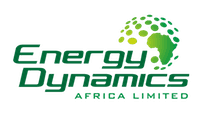Solar PV Systems - Sustainable Energy Solutions
Harness the power of the sun with our high-performance solar PV systems. Energy Dynamics Africa offers customized solar solutions to reduce energy costs and promote sustainability.
What Is a Solar Power System?
A solar power system, also known as a photovoltaic (PV) system, is a technology that harnesses energy from the sun and converts it into electricity for various applications.
A typical solar power system includes solar panels, an inverter, solar batteries or storage units, and other essential components. These work together to transform sunlight into usable energy. Moreover, solar systems come in various types and forms to suit different needs.
Types of Solar Systems
a. Hybrid PV System
A hybrid solar PV solution consists of key components: solar panels, a hybrid inverter, and battery storage. In this system, the energy generated by solar panels is harnessed and connected to an inverter, which integrates it with a battery storage and generator system.
By combining solar panels, a hybrid inverter, and battery storage, this system enhances power reliability and efficiency. It harnesses solar energy as the primary source, reducing reliance on traditional sources and mitigating greenhouse gas emissions.
Excess electricity is stored in batteries for use during low solar availability, blackouts, and nighttime. Additionally, a grid or generator provides backup power during extended periods of low solar irradiation or unexpected outages. This integrated approach improves electricity supply in areas with unreliable grids, fostering a greener and more sustainable energy supply.

Schematic of a Hybrid Solar PV System
b. Grid-Tied Solar System
Grid-tied solar systems are the most common choice for residential and commercial setups. These systems are directly connected to the electrical grid and work alongside your local utility company to provide power.
Priority is given to the solar PV power from the inverter, then the deficit demand is met by the grid. For example, if the load demand is 10 kW and solar production is 8 kW at that moment, the remaining 2 kW is imported from the grid.

c. Off-Grid Solar System
Off-grid solar systems, also known as stand-alone solar battery systems, are ideal for remote areas without access to the electrical grid or for individuals seeking complete energy independence. Unlike grid-tied systems, off-grid systems are completely disconnected from the grid and rely entirely on solar panels and battery storage.
These systems require batteries to store excess energy for use at night or during cloudy days.
We use quality solar components with longer lifespans and improved performance for better system reliability.
1. PV Modules
Solar panels, or PV modules, are the heart of the system. These panels are made up of multiple solar cells, which capture sunlight and convert it into direct current (DC) electricity through a process called the photovoltaic effect. We use Tier 1 PV modules, best in quality and performance.
This is a tier-one solar panel with a life cycle of 25 years. Jinko PV modules give a linear performance warranty for 0.55% annual degradation for 25 years.
2. Inverter
The solar inverter plays a crucial role in the system. It converts the DC electricity generated by the solar panels into alternating current (AC), which is the standard form of electricity used in homes and businesses. Inverters ensure the electricity is compatible with your existing electrical systems.
For such systems, we use our hybrid inverters. They have an inbuilt charge controller hence no need for one. They also have a remote monitoring platform.


Monitoring Platform
Our Monitoring system is a smart energy management application, which is specially designed for global household owner users.
With full-on visual experience, user-friendly data display and all-round monitoring functions, Our system makes smart energy management easier for everyone at No additional software costs.

Supercapacitor Energy Modules
Supercapacitor Energy modules are vital for storing excess electricity produced during the day. These modules store energy for use during the night or on cloudy days when solar production is reduced. They provide energy independence and continuity. We use our supercapacitor energy storage units with a 10-year non-degradation warranty. This new storage unit has a DOD of 99.9%.
An Examples of a supercapacitor energy storage is shown below.
Capess Supercapacitor Storage Unit
Lithium Battery
Lithium batteries are used for storing excess electricity produced during the day. These batteries, just like supercapacitor modules, store energy for use during the night or on cloudy days when solar production is reduced. Our Lithium batteries have a warranty of 10 years.

Lithium Battery Unit
In addition to installation of solar PV Systems, we also offer User Training and carry our free system checks for 1 year after installation.
Why Choose Us?
- Quality components with long lifespans
- User training included
- Free system checks for 1 year after installation
Looking for a Solar PV system for your home or business? Contact us today and let Energy Dynamics Africa help you transition to clean, sustainable energy!
Get in Touch
Call: +254 700 894392
Email: sales@energydynamicsafrica.co.ke
